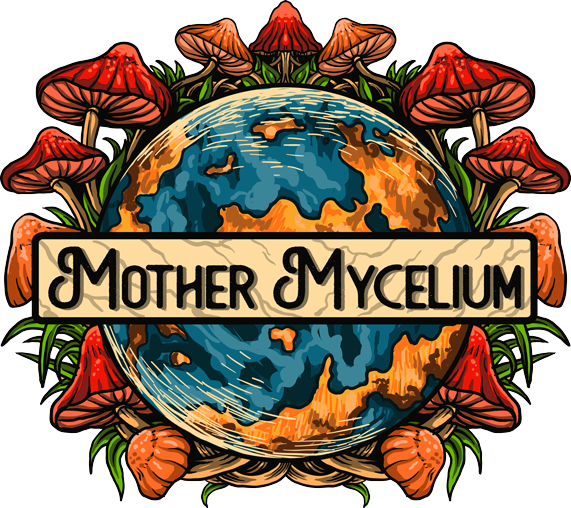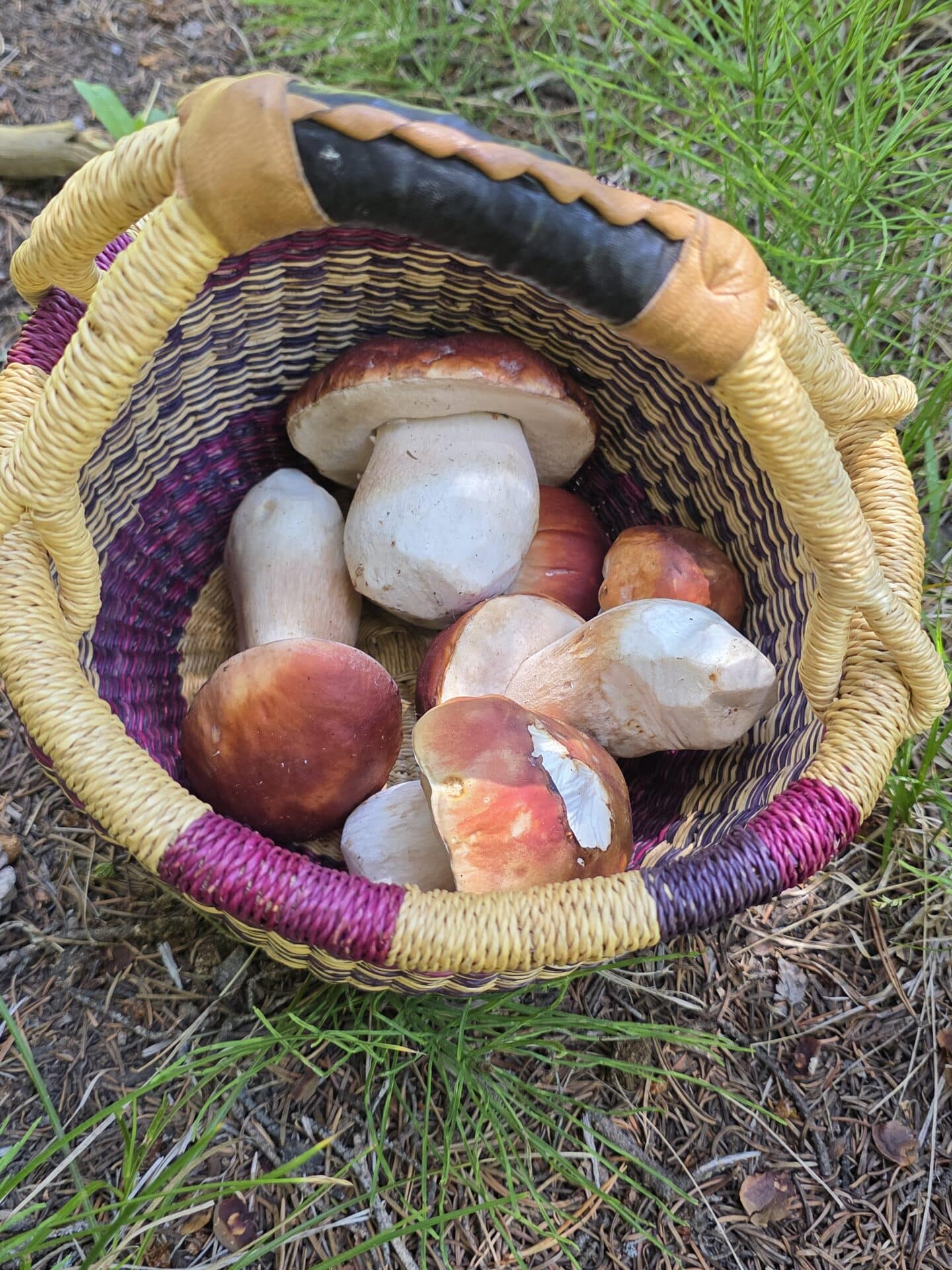
Introduction to Mushroom Foraging in the Rockies
Mushroom foraging is a unique adventure that combines hiking, nature observation, and the thrill of discovery. The Rocky Mountain region is home to breathtaking landscapes and a beautiful diversity of wild mushrooms. This article is geared towards mushrooms you might find in the Rockies, but you’ll find useful information throughout, no matter where your next foraging expedition takes you! Whether you’re a nature lover, a foodie, or just curious about fungi, foraging offers a rewarding way to connect with the gifts of the natural world.
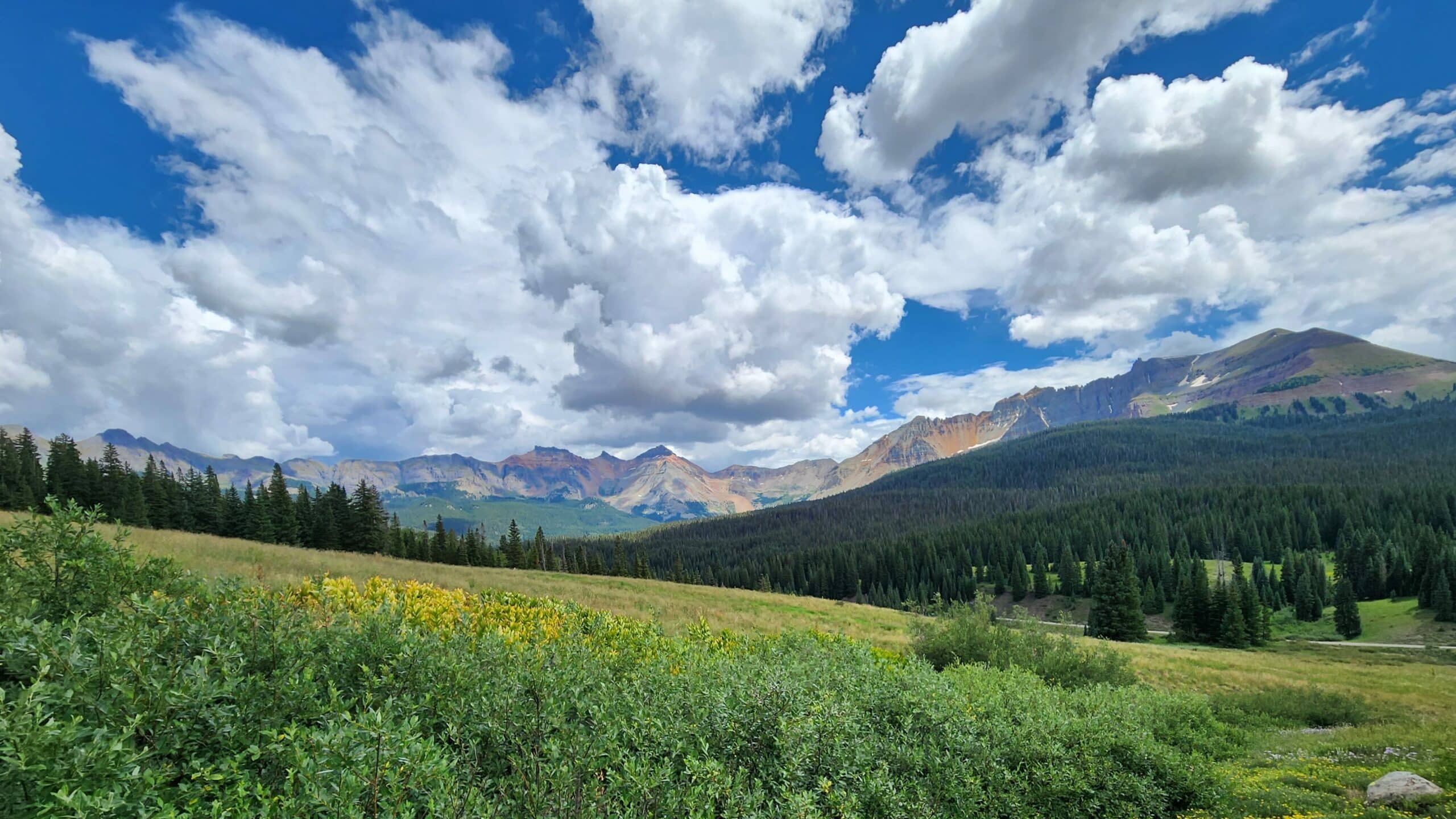
Why Forage for Mushrooms?
The Thrill of the Hunt
Foraging for mushrooms is like an Easter egg hunt for grown-ups (and kids, too). Every trip is an adventure filled with the excitement of uncovering something new, whether you’re finding your first chanterelle, stumbling upon a vibrant yet mysterious species, or simply admiring the fascinating world of fungi. The process of searching, identifying, and learning about wild mushrooms is endlessly engaging and rewarding.
Nature’s Gourmet Treats
Many wild mushrooms are edible and absolutely delicious, offering flavors and textures you won’t find in store-bought varieties. Prized species like porcini, chanterelles, morels, and matsutakes are sought after by chefs worldwide, and foraging allows you to enjoy these gourmet treats fresh from the forest. Plus, cooking with your own wild harvest adds a sense of satisfaction and creativity to your meals.
Mental Health Benefits
Spending time in nature has been shown to reduce stress, anxiety, and depression, while boosting overall mood and mental clarity. Mushroom foraging encourages mindfulness as you slow down, observe your surroundings, and focus on the details of the natural world. This deep connection with nature can be incredibly grounding and restorative, offering a break from the demands of modern life.
Exercise in Disguise
Foraging is also a fantastic way to stay active. Walking through forests, climbing hills, and exploring new terrain are all great forms of exercise that improve cardiovascular health, build strength, and increase endurance. Foraging often feels less like exercise and more like an adventure, making it an enjoyable way to stay fit and healthy.
Connection with Nature
Foraging fosters a deeper understanding and appreciation of the natural world. As you learn about mushrooms, you’ll also become more attuned to the ecosystems they inhabit—trees, soil, weather patterns, and more. This connection can inspire a sense of stewardship for the environment and deepen your respect for the planet..
Getting Started: Safety First
1. Never Eat a Mushroom Without Positive Identification
Many edible mushrooms have toxic lookalikes, and some poisonous mushrooms can be deadly. If you’re not 100% sure of what you’ve found, don’t eat it. If you are not confident (or even if you are), you can still find joy in observing the beautiful colors, shapes, and diversity of the fungal world. Always consult multiple sources before consuming any wild foraged materials.
2. Go With a Guide or Take a Class
If you’re new to foraging, join a guided walk or take a class. Many local experts and organizations, such as the Colorado Mycological Society, offer forays and educational events. These experiences are invaluable for learning safe identification practices, ethical harvesting techniques, and understanding the local ecology. Check out our events page for our upcoming guided foray offerings.
3. Use Reliable Field Guides
Invest in a good mushroom identification book. For the Rockies, we recommend Mushrooms of the Rocky Mountain Region by Vera Stucky Evenson. This guide is well organized and easy to use. Other recommended titles include The Essential Guide to Rocky Mountain Mushrooms, Mushrooms Demystified, and the Audubon Society Field Guide to North American Mushrooms. Avoid relying solely on AI identification apps, as they are often incorrect or misleading and may lead to dangerous misidentifications. Check out our Mushroom Foraging Resources article for a complete list of useful foraging guides and websites.
Foraging Basics: Where and When
Habitat
One of the first factors to consider when planning your foraging adventure is the habitat. Many prized edible mushrooms in the Rockies grow in mixed conifer forests at elevations above 8,000 feet. Other varieties, like yellow morels and oyster mushrooms, thrive in riparian areas near cottonwoods or open fields. Burn morels, in particular, can be abundant in some seasons, especially during the first and second years after a wildfire.
When selecting a location, it’s essential to consider rainfall, weather data, elevation, and geographical features. For example, north-facing slopes are excellent starting points during hot and dry conditions because they retain more moisture and are better protected from sun exposure.
It’s also helpful to seek out microclimates. Look for shady spots under large trees or fallen logs that are likely to retain moisture and humidity. Valleys, streams, and other areas shielded from direct sunlight can also better support fungi growth.
Timing
The time of year plays a crucial role in determining what mushrooms are available. Summer and fall are prime seasons for porcinis, chanterelles, matsutakes, and other highly sought-after varieties. Spring brings yellow morels, agaricus, and other early-season mushrooms. Oyster mushrooms, on the other hand, are versatile and can fruit almost year-round, including in spring, summer, fall, and even winter.
Plan your forays around these seasons and consider precipitation patterns, as rain often triggers mushroom growth. Knowing what species you’re targeting will help you determine the best time and conditions to search.
Location
Choose a location that is accessible and where mushroom harvesting is allowed. A favorite hiking trail or walking path is often a good starting point for beginners. However, to avoid overharvested areas or competition with other foragers, consider exploring less-traveled locations, such as 4×4 trails or remote backcountry areas.
Whether you’re on a popular trail or in the middle of nowhere, it’s important to keep your eyes open—mushrooms can surprise you in the most unexpected places!
Essential Gear
Make sure you’re well-prepared before heading out into the field. Here’s a list of essential gear to bring on your foraging adventure:
- Field Guide: For proper mushroom identification.
- Knife: For harvesting and cleaning mushrooms.
- Basket or Mesh Bag: To carry mushrooms while allowing spores to disperse.
- Notebook and Pen: For taking notes and spore prints.
- Phone or Camera: To document your finds for later identification or sharing.
- Water, Rain Jacket, and Hiking Gear: For staying comfortable and safe in the field.
- Tackle Box: For organizing and protecting smaller samples.
- Jeweler’s Loupe: For magnifying small identification characteristics.
- KOH (Potassium Hydroxide): To check for chemical reactions.
- Trash Bags: For picking up litter and leaving the forest cleaner than you found it.
Basic Mushroom Anatomony
When identifying mushrooms, it’s essential to understand their basic anatomy. Each part of the mushroom provides important clues for identification. Here are the key anatomical terms to know:
Pileus (cap):
The pileus is the top, umbrella-like structure of the mushroom. It comes in a variety of shapes, sizes, textures, and colors, all of which can be important for identification. Some pilei may be smooth, scaly, slimy, or dry, and their shape can range from flat to convex, conical, or even funnel-shaped.
Stipe (stem):
The stipe is the stalk that supports the pileus. Stipes can vary greatly in length, thickness, and texture. Some are solid, while others are hollow, fibrous, or fragile. The stipe often includes unique characteristics such as rings, patterns, or bulbous bases that are critical for identification.
Hymenophore (gills/pores/teeth):
The hymenophore is the spore-bearing surface located on the underside of the pileus. This is one of the first features to examine when identifying a mushroom:
- Gills are thin, blade-like structures that radiate out from the stipe. Their spacing, color, and attachment to the stipe are key features.
- Pores are tiny holes in a spongy surface, like those found on boletes.
- Teeth (or spines) are small, downward-pointing projections, common in mushrooms like hedgehogs (Hydnum species) and lion’s mane.
Volva (universal veil):
The volva is the remnant of the universal veil—a protective membrane that completely encloses the young mushroom during its early growth stages. As the mushroom matures, this veil breaks apart, leaving behind a cup-like structure (volva) at the base of the stipe. In some species, remnants of the universal veil may also appear as patches or “warts” on the pileus. The volva is a key feature in identifying genera such as Amanita.
Annulus (partial veil):
The annulus is the remnant of the partial veil, a thin membrane that covers and protects the hymenophore during the mushroom’s immature stage. When the mushroom matures and the pileus expands, the partial veil tears, leaving behind a ring-like structure (annulus) around the stipe. The texture, thickness, and position of the annulus can vary between species and are important for identification, especially in genera like Agaricus and Amanita.
Mycelium:
The mycelium is the vegetative, root-like structure of the mushroom, made up of a network of fine, thread-like filaments called hyphae. It lives underground or within the substrate (such as wood or leaf litter) and serves as the main body of the fungus, absorbing nutrients from the environment. The mushroom itself is the fruiting body of the mycelium, appearing only when conditions are right for reproduction.
Mushroom ID 101
Now that you understand the basic anatomy of mushrooms, let’s explore the key characteristics to observe when identifying a mushroom in the field. While advanced techniques like microscopy and DNA sequencing exist, this guide focuses on practical field identification.
1. Habitat
The first thing to note is the habitat in which the mushroom is growing. Before picking or disturbing the mushroom, observe the substrate and surrounding environment. Ask yourself:
- Is the mushroom growing in moss near a stream?
- Is it on a dead or dying tree? On a living tree?
- Is it growing directly on soil, leaf litter, or even on an insect?
Different mushrooms grow on specific substrates, and understanding these relationships is essential for identification.
2. Spore-Bearing Surface
Examine the underside of the pileus to classify its spore-bearing surface:
- Gills: Thin, blade-like structures commonly found in “ordinary” mushrooms.
- Pores: Sponge-like tubes, as seen in boletes.
- Teeth: Downward-pointing spines, like those on hedgehogs (Hydnum) or lion’s mane.
- Encased Spores: Puffballs and similar mushrooms lack these structures entirely, instead encasing their spores inside.
This is one of the most critical features to note when identifying mushrooms.
3. Gill Attachment
For gilled mushrooms, pay attention to how the gills attach to the stipe. Some common types of attachment include:
- Free: Gills do not touch the stipe (e.g., Agaricus).
- Attached: Gills connect directly to the stipe.
- Adnate and Adnexed: Variations of attached gills where the angle or position differs.
4. Spore Color
Spore color helps narrow down identification. Take a spore print by placing the pileus, gills down, on a sheet of white or black paper (or both for contrast). After a few hours, the spores will leave behind a print, revealing their color. Check out our video for a quick guide on how to take a spore print.
5. Staining
Some mushrooms change color when cut, bruised, or damaged. Staining reactions, like turning blue or red, can aid in identification and are often genus-specific.
6. Aroma
Mushrooms exhibit a wide range of aromas, from pleasant and earthy to pungent or unpleasant. Descriptions like “gym socks,” “rotting flesh,” or “almonds” can be surprisingly accurate and are worth noting.
7. Taste (Use Caution!)
Taste is a useful characteristic but should be done with extreme caution. It is safe to taste even toxic mushrooms as long as you spit out the tissue without swallowing. Some mushrooms may taste sweet, while others are acrid, spicy, or bitter. If unsure, it’s best to skip this step.
8. Shape
Mushrooms take on many forms, from the familiar cap-and-stipe varieties to shelf fungi, puffballs, and coral mushrooms. Recognizing these shapes helps with higher-level classifications.
9. Color of Cap and Stipe
While mushroom colors can appear vibrant, they may vary due to environmental factors like sunlight or age. For example, bright red Amanitas may fade when exposed to sunlight. Always consider other features alongside color.
10. Universal Veil and Partial Veil
Note the presence and characteristics of the universal veil (volva) and partial veil (annulus). These features are critical for identifying mushrooms like Amanita.
11. Base of the Stipe
When harvesting mushrooms for identification, carefully dig around the base of the stipe to avoid breaking it. Some mushrooms have a bulbous or tapered base, while others have a volva (sac or cup).
12. Chemical Reactions
Using chemicals like KOH (potassium hydroxide) can help with field identification. Some mushrooms react with KOH, producing color changes that can confirm species. Always handle chemicals responsibly and follow safety guidelines.
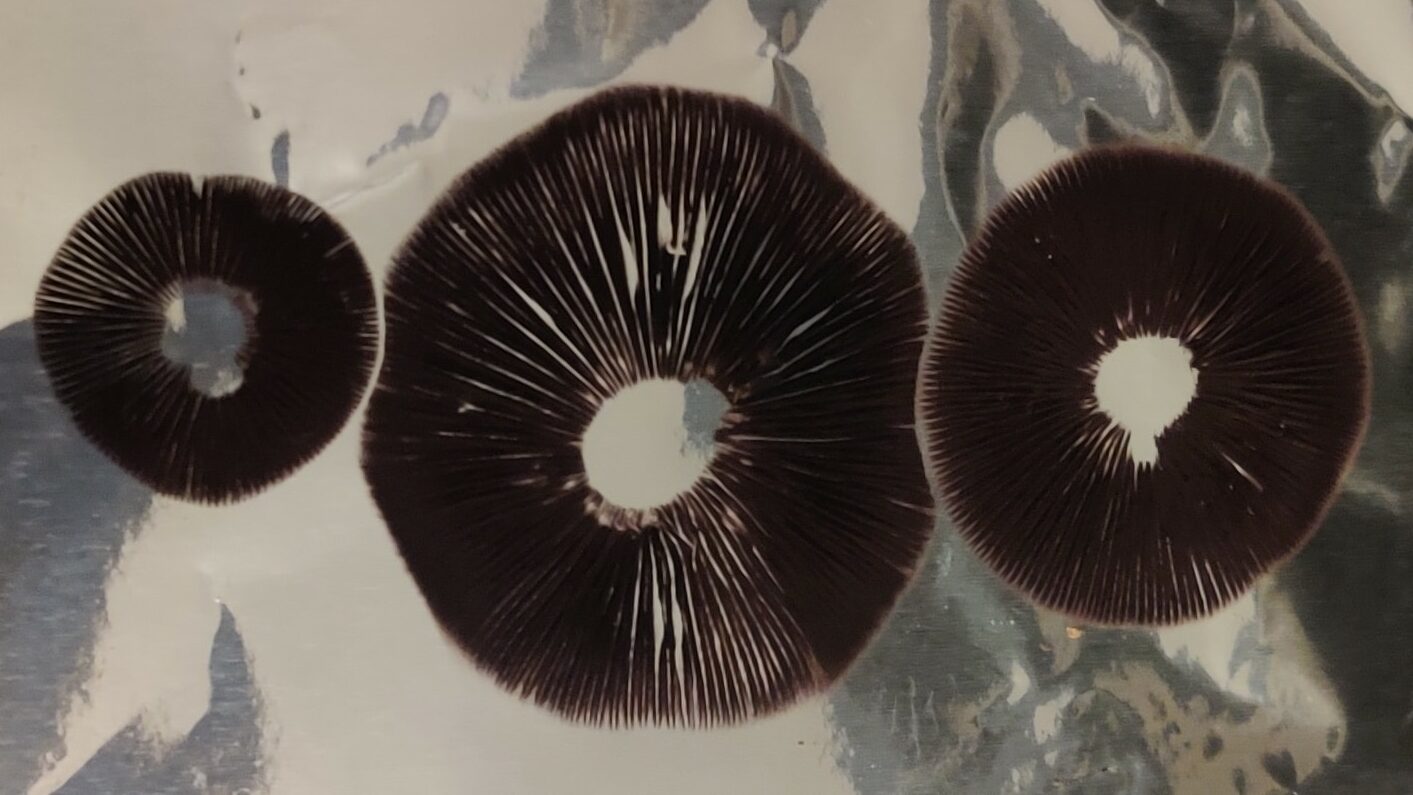
Foraging Tips and Etiquette
Take Only What You Need
Since the main part of any fungal organism is made of mycelium (the underground network), mushroom populations are generally not harmed by harvesting. However, it’s important to be considerate—leave plenty for wildlife and other foragers, and always take only what you need. Use everything you harvest to avoid waste.
Harvest Mindfully
When harvesting mushrooms, use a knife to cut them cleanly at the base or gently pull them from the ground, depending on the species and your purpose. Cleaning off debris in the field will make processing your mushrooms easier later. Always store mushrooms in a breathable basket or mesh bag to allow air circulation and prevent spoilage. Never use plastic bags, as they trap moisture and can cause mushrooms to degrade rapidly.
The Cut or Pluck Debate
There is ongoing debate among foragers about whether it’s better to cut mushrooms at the base or pluck them entirely from the ground. Here’s a breakdown of both perspectives:
- Plucking the Mushroom: Pulling the mushroom out by the base of the stem ensures that you retrieve the entire organism. This is essential for taxonomic identification, as features like the shape of the stem base or presence of a volva are often buried underground. For unidentified mushrooms or scientific study, plucking is strongly recommended. However, some argue that this method may disturb the surrounding mycelium, though studies suggest this is generally not harmful when done mindfully.
- Cutting the Mushroom: Cutting the mushroom at the base of the stem is preferred when harvesting for the table. This method keeps the mushroom cleaner and reduces the amount of dirt or debris you need to remove later. Additionally, it minimizes disturbance to the surrounding area.
- Our Recommendation: Decide on your harvesting method based on your purpose. If you’re identifying an unknown species, carefully dig or pluck the mushroom to preserve the entire stem and all identifying features. For edible mushrooms you’re confident about, cutting at the base is a cleaner and more efficient method.
Know the Rules
Foraging regulations vary depending on the type of land you’re on:
- National Forests and Bureau of Land Management lands often allow mushroom foraging for personal use. However, permits may be required for larger quantities or commercial collection.
- National parks, state parks, and wildlife refuges typically prohibit foraging to protect ecosystems.
- Private Land: Always obtain explicit permission from the landowner before foraging on private property.
Check with the local land management office or park authorities before heading out to ensure you’re following current regulations.
Using iNaturalist for Mushroom Foraging
iNaturalist is a fantastic tool for mushroom foragers of all experience levels. It allows you to document your finds, get help with identification, and contribute to citizen science. Here’s how to make the most of it:
Take Multiple Photos
For the best chance at an accurate ID, photograph the mushroom from several angles: the cap, gills or pores, stem, base, and, if possible, a shot of the mushroom cut in half to show the interior. It’s also helpful to include a shot of the mushroom in its natural setting before picking or disturbing it.
Document Details
Use the notes field to record important information about the habitat and environment. Include details like nearby trees or plants, substrate (e.g., soil, wood, moss), and any distinctive features such as staining, odor, flavor, or chemical reactions.
Upload and Share
Post your observations to iNaturalist using the app or website. The community, including expert mycologists, can help confirm or correct your identification. However, never rely solely on the AI identification suggestions—while the AI can provide a starting point, mushroom identification is complex, and the AI often gets it wrong. Always verify with expert input.
Learn and Connect
iNaturalist is also a great way to connect with other foragers and naturalists. By sharing your observations, you’ll not only learn about local species but also contribute to our understanding of fungal diversity and distribution.
Edible, Poisonous, and Unpalatable Mushrooms
Most wild mushrooms are not poisonous but are either inedible or unremarkable in taste. Only a handful are edible and prized, while a small percentage are toxic. Careful identification is always essential before consuming any wild mushroom, though many people overestimate the number of deadly species.
Poisonous Mushrooms
Experts estimate that only about 1% of mushroom species are significantly poisonous. However, some of these can be deadly even in small amounts, so careful identification is always critical. It’s important to note that there are no known mushrooms that are poisonous to the touch, so don’t be afraid to pluck unknown mushrooms and examine them closely. Just remember: never consume any wild mushrooms unless you are 100% certain of their identity.
Edible Mushrooms
A small fraction of wild mushrooms are considered edible and delicious—perhaps a few dozen species are commonly sought after by foragers. These prized mushrooms are celebrated for their unique flavors and textures, making them a favorite of chefs and nature lovers alike.
Unpalatable or Inedible Mushrooms
The majority of mushroom species are not poisonous but are also not commonly eaten because they are tough, woody, bitter, bland, or otherwise unappetizing. While they won’t harm you, these mushrooms are typically left untouched by foragers.
Join the Community
Foraging is always more fun when the experience is shared with other mushroom lovers. Join local mycological societies, attend festivals like the Telluride Mushroom Festival, and connect with other enthusiasts both online and in person. Check out our events page for a list of upcoming forays and workshops in the Denver/Boulder area!
Final Thoughts
Mushroom foraging is an intriguing blend of science, adventure, and culinary delight. Whether you’re stepping into the forest for the first time or you’re a seasoned forager, the world of mushrooms is always full of surprises. With the right preparation, respect for nature, and a healthy dose of caution, you’ll discover a fascinating world beneath the forest canopy. Happy hunting!
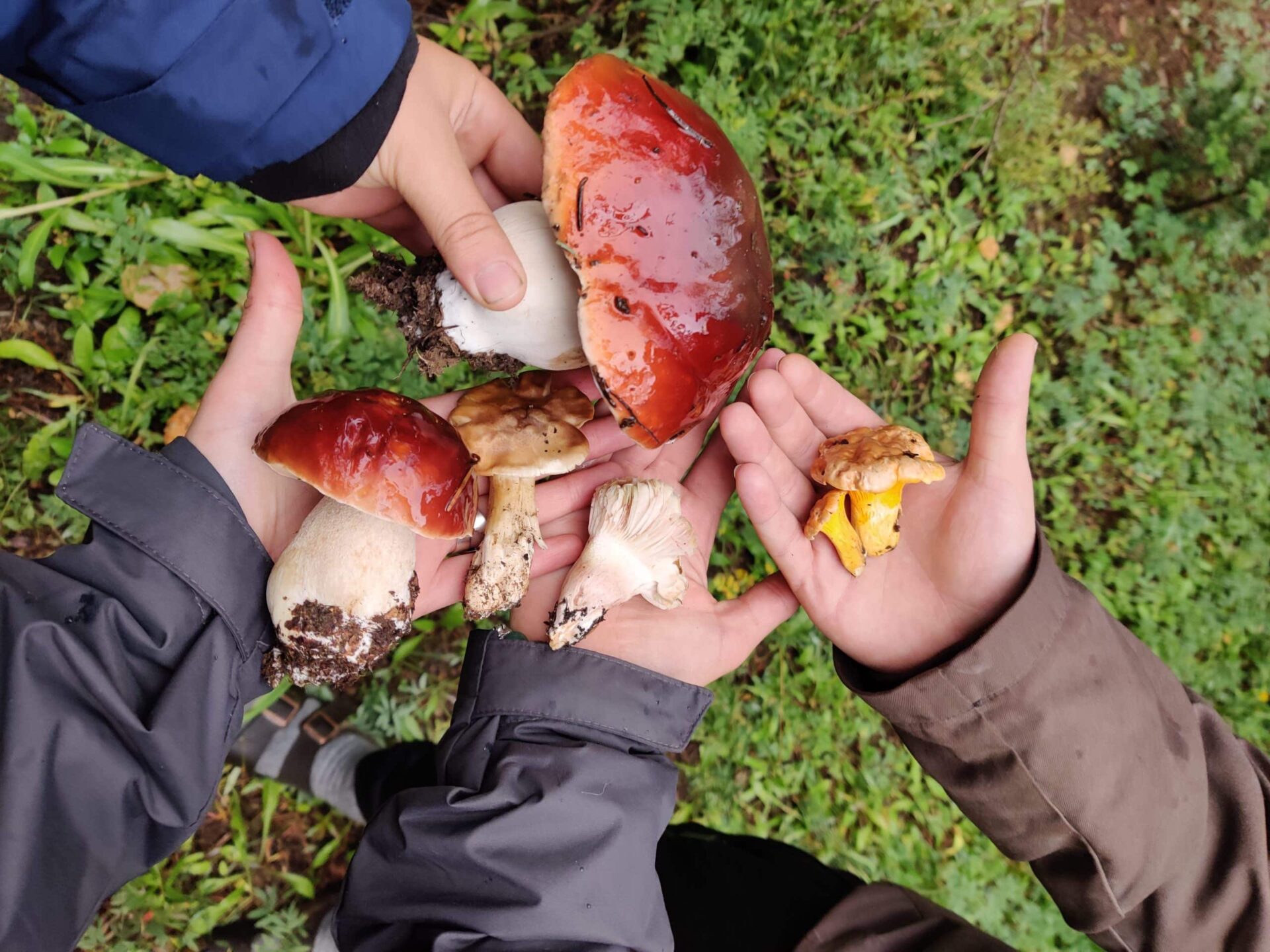
Disclaimer: The information provided on this website is for educational purposes only and should not be solely relied upon for identifying or consuming mushrooms, plants, or other foraged materials. Always ensure that you have made accurate identifications through multiple trusted sources before consuming any foraged items. The creator assumes no responsibility for any adverse effects resulting from the use or misidentification of foraged materials.
Latest Articles
Latest Articles
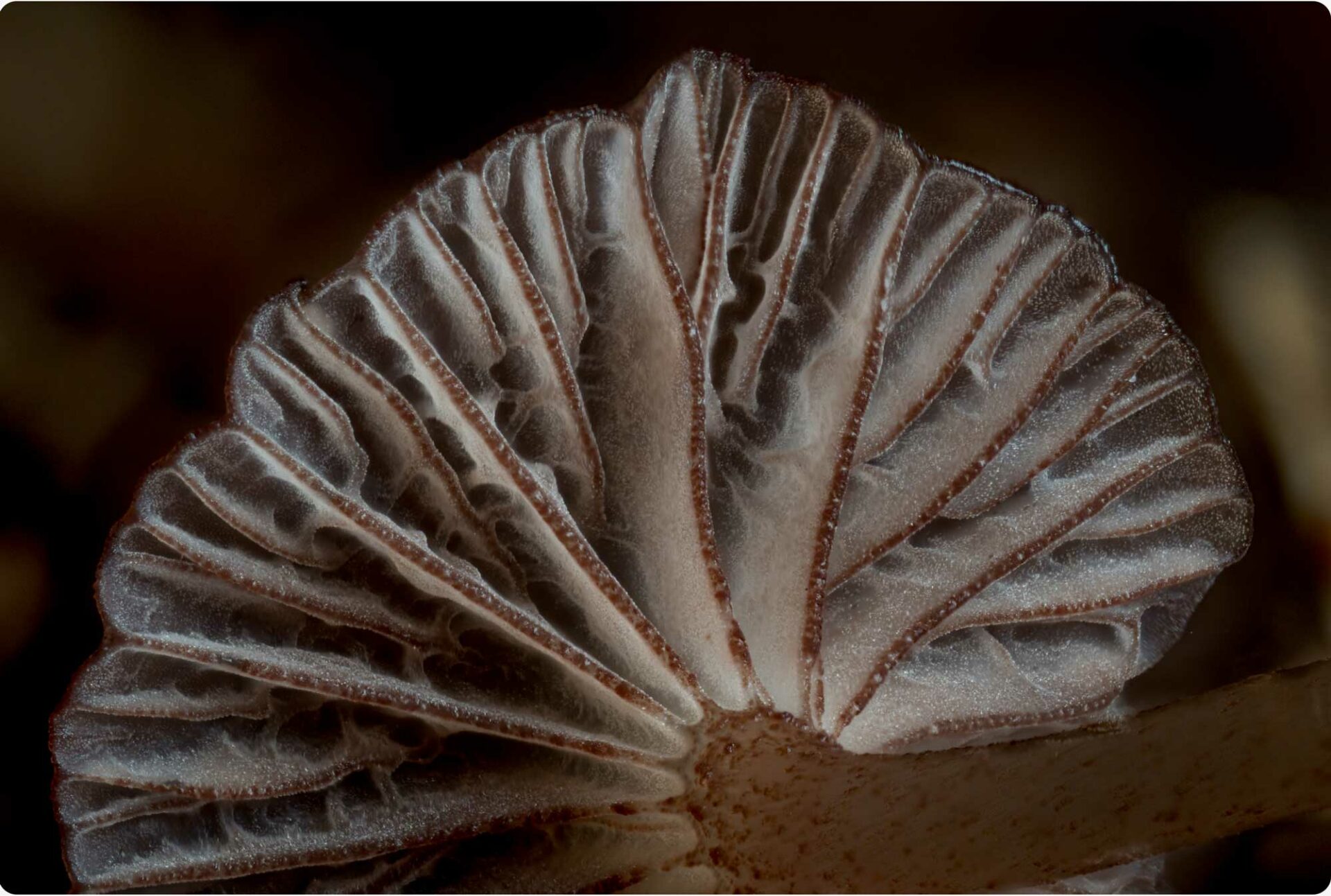
Mycology Glossary: Unlocking the Language of Fungi
Fungi are fascinating organisms, but the world of mycology (the...
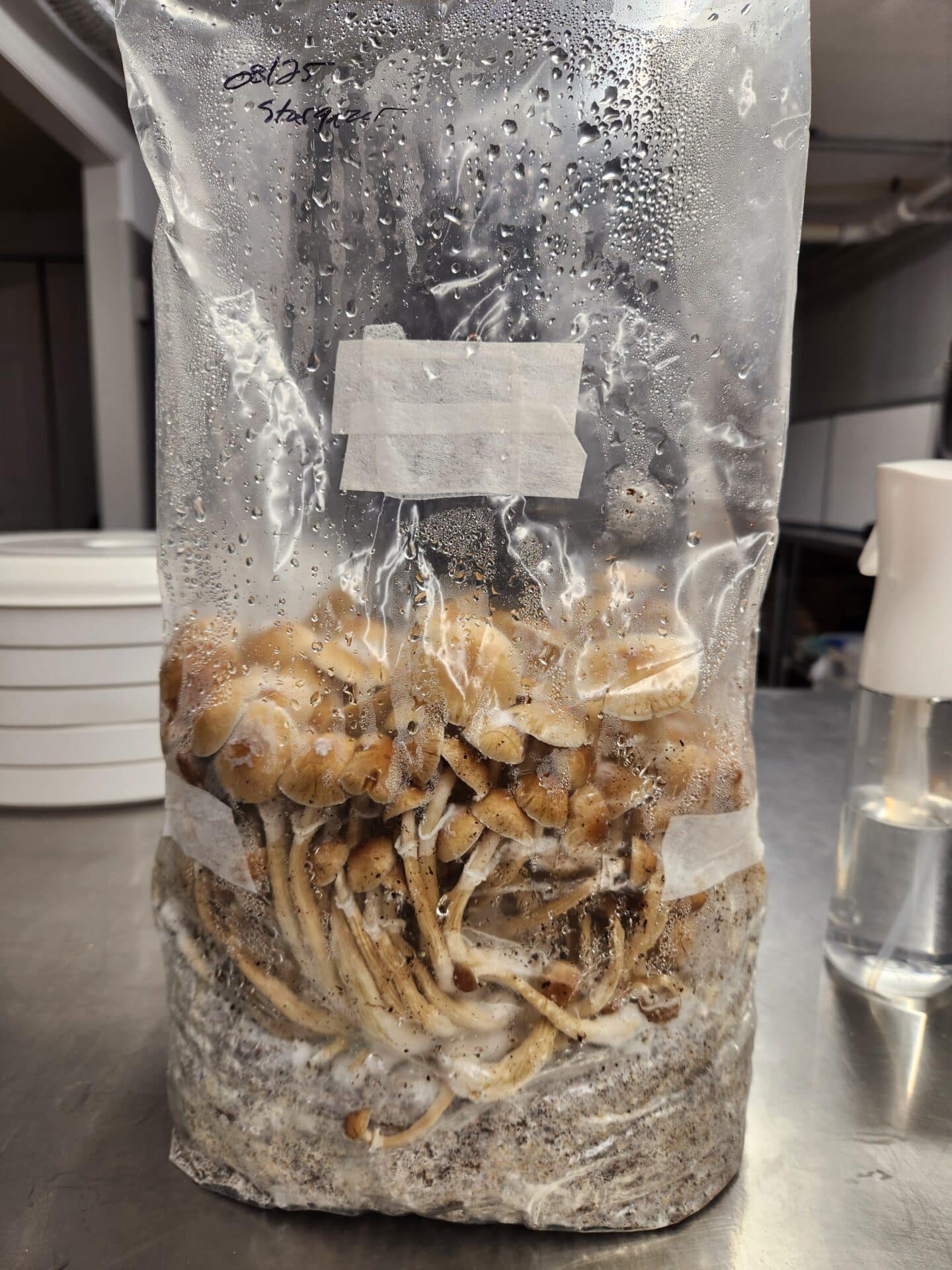
DIY Mushroom Grow Bags
Intro Growing mushrooms at home doesn’t have to be complicated...
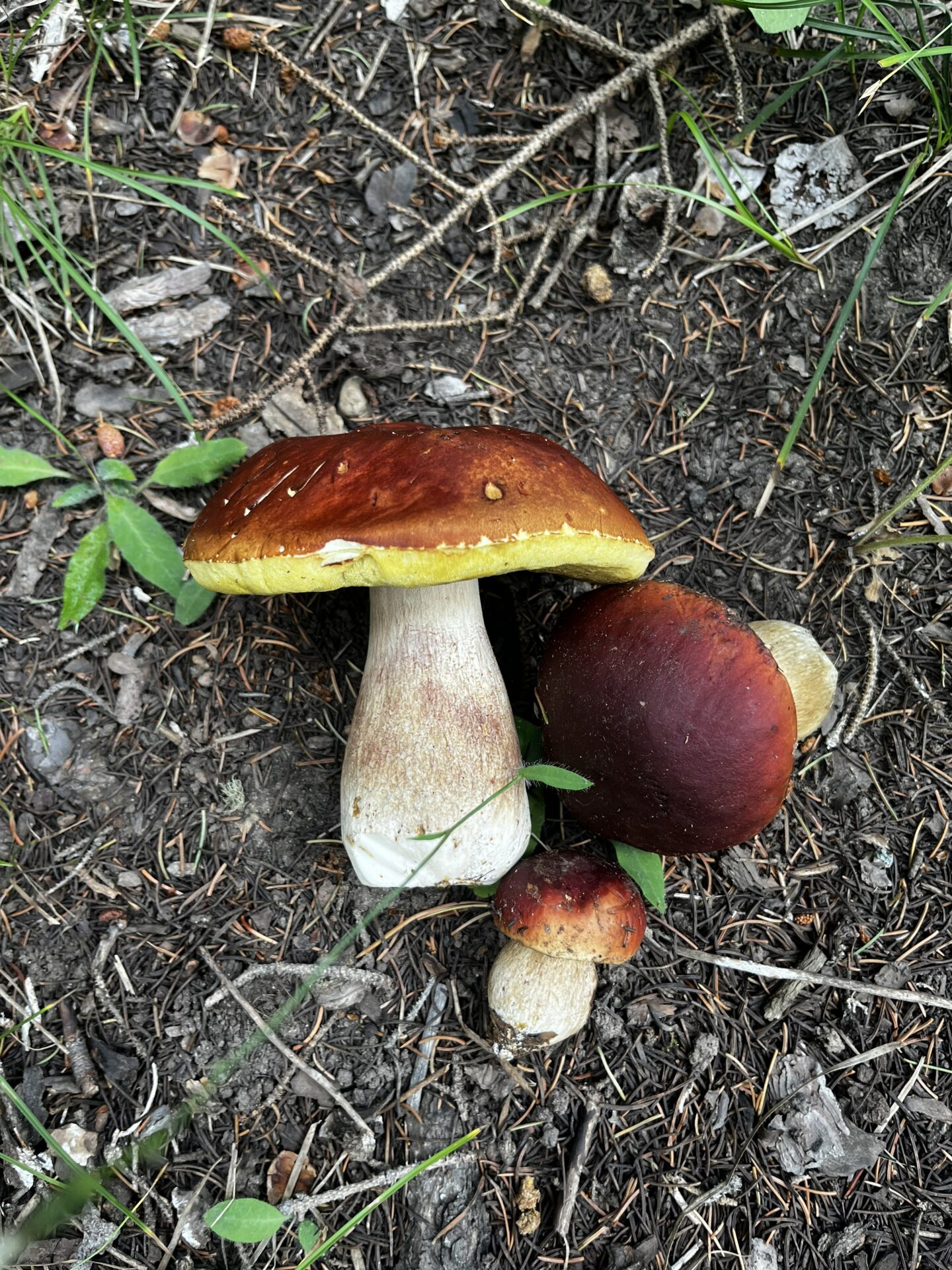
Colorado Mushroom Hunting Resources
Whether you’re just starting your journey into mushroom foraging or...
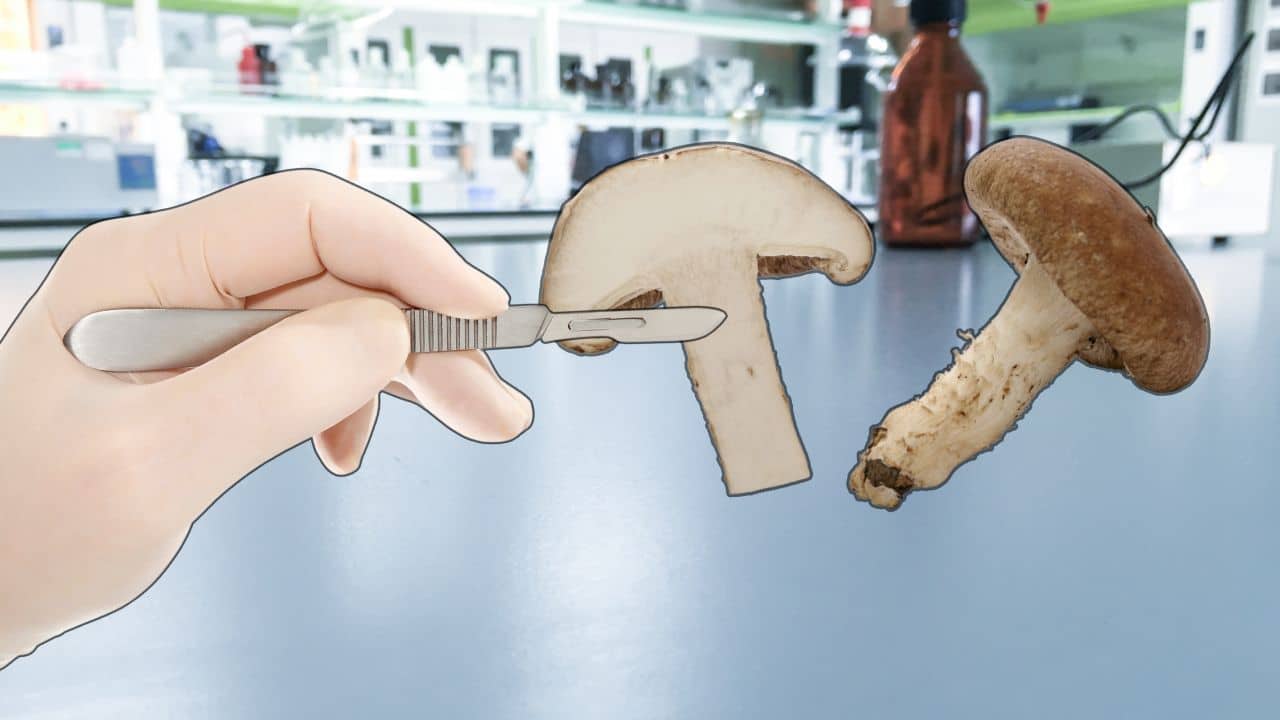
Step-by-Step Guide to Cloning Mushrooms
As you become more experienced in mushroom cultivation, you may...
